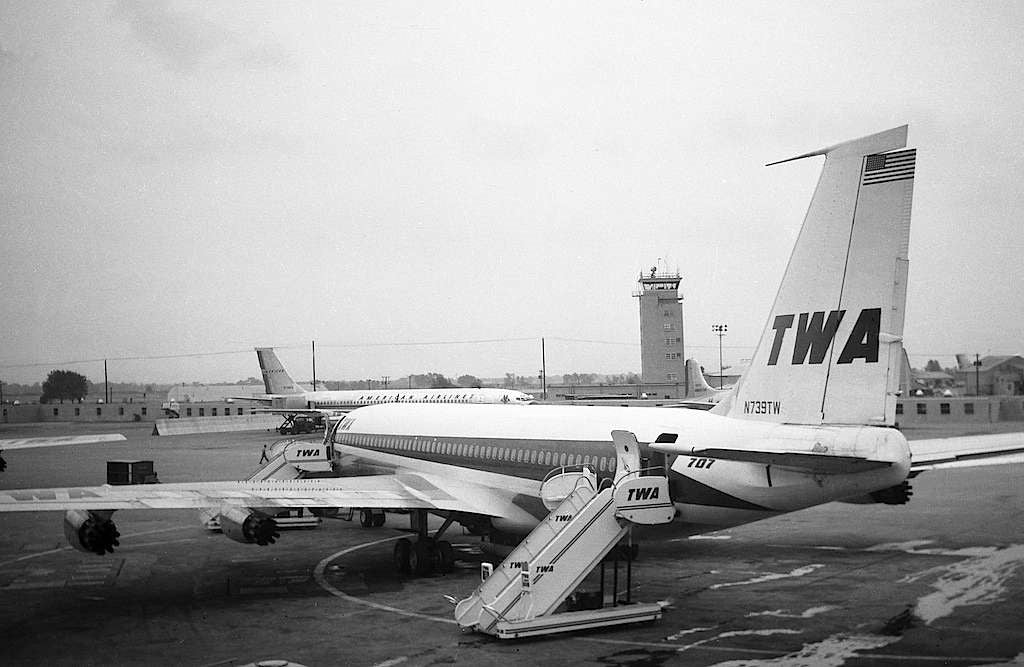World War II, a pivotal event that reshaped nations and cultures, left an unforgettable mark on the airline industry. This global conflict ignited a surge of technological innovations in aviation, profoundly transforming its role in both civilian and military spheres. Below, we’ll explore the sweeping changes driven by the war, examining how they elevated the airline industry from its developing stages to becoming a crucial element of global transportation.
Accelerated Technological Innovation
The war acted as a powerful accelerator for advancements in aircraft technology. Faced with the urgent demands of global conflict, nations dramatically increased their investment in aviation, pushing the boundaries of technological advancement. For example, the advent of jet propulsion introduced speeds once deemed impossible, marking the dawn of a new era in commercial air travel. Additionally, innovations such as pressurized cabins allowed aircraft to operate at higher altitudes for longer durations, greatly enhancing safety and passenger comfort. These revolutionary advancements were instrumental in fueling the post-war boom in commercial aviation.
Expansion of Infrastructure
The wartime demands also prompted a significant expansion of aviation infrastructure. Airfields, control towers, and other essential facilities were swiftly built or upgraded to support the logistical needs of military operations. Far from becoming obsolete after the conflict, this expanded infrastructure provided a robust foundation for the rapidly growing commercial aviation sector. Airports that had been crucial for wartime logistics were repurposed as major hubs for international and domestic flights, transforming air travel from a wartime necessity into a cornerstone of global connectivity and commerce. Airports that had been instrumental in military operations became central hubs for international and domestic flights, transforming air travel from a military utility to an essential element of global connectivity and commerce.
World War 2 necessitated a vast expansion of aeronautical infrastructure. Once sparse and rudimentary, airfields were rapidly constructed and expanded across the globe to accommodate the movement of military forces. This expansion laid a foundational network that would be utilized in the post-war era to support commercial air travel. The war essentially acted as a catalyst, transforming aviation from an exclusive means of travel to an accessible and essential service.
Shifts in Manufacturing Dynamics
The wartime economy prompted a dramatic shift in manufacturing priorities and capabilities. Manufacturers who previously focused on consumer goods pivoted their operations toward wartime production, particularly in aircraft manufacturing. This realignment boosted production capacities and led to the refinement of manufacturing techniques and a significant expansion of the skilled labor force. Post-war, these factories quickly transitioned to commercial production, and the workforce skills developed during the war propelled the industry forward.
Regulatory and Operational Changes
The internationalization of air travel during the war led to significant regulatory changes. In 1944, the Chicago Convention laid the groundwork for critical international standards concerning airspace management, aircraft registration, and safety protocols, setting the stage for the ensuing boom in global air travel. Furthermore, the war catalyzed the creation of various aviation-related governmental and international bodies tasked with standardizing and regulating the burgeoning industry, thus facilitating a smoother shift to peacetime operations.
The Rise of Civil Aviation
In the wake of World War 2, the airline industry experienced a profound transition from military to civilian aviation. Surplus military aircraft were repurposed for commercial use, significantly lowering the barriers to new airlines entering the market. This surge of aircraft, coupled with a cadre of experienced pilots and expanded airfield infrastructure, catalyzed a swift expansion in commercial flights. As a result, air travel transformed from an exclusive luxury into a widely accessible mode of transportation, revolutionizing business, tourism, and personal travel.
Conclusion
World War 2’s influence on the airline industry was revolutionary, accelerating advancements that might have otherwise unfolded slowly over decades. The conflict sparked significant technological and infrastructural improvements and shifted societal views on aviation, setting the stage for the modern air travel landscape. These changes laid the groundwork for the modern air travel industry, revolutionizing global transportation. This pivotal period laid the essential foundations for the contemporary air travel industry, marking a revolutionary chapter in its history. The conflict drove technical innovations and substantial infrastructure development and profoundly transformed societal views on aviation. This set the groundwork for the modern air travel industry. Today, as we navigate continents with remarkable ease, our abilities and methodologies in air travel are intricately linked to the enduring legacy of this pivotal period.
For more unique stories about the men and machines of WWII, visit Aces In Action. Here, you’ll find an one-of-a-kind piece of artwork by Craig Tinder titled “American Evolution,” which illustrates the evolution of 30 years between two of America’s front-line air superiority fighters – the P-51 Mustang and the F-16 Fighting Falcon. The limited edition canvas print includes fragments of both aircraft making it a unique piece of history!
American Evolution – P-51 & F-16 Aviation Art by Craig Tinder
A tribute to American air power, American Evolution displays two iconic American fighters – the P-51 Mustang and F-16 Fighting Falcon in a display of U.S. air superiority. With just over 30 years of evolution between these aircraft, they served over 25 various countries as front-line fighter aircraft. The P-51 Mustang and F-16 Fighting Falcon can still be seen together at various airshows across the United States.






Share:
Aerial Domination: American WWII Fighter Aircraft Analysis
Propeller of History, the story behind "The CO's Query"